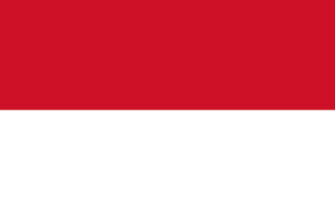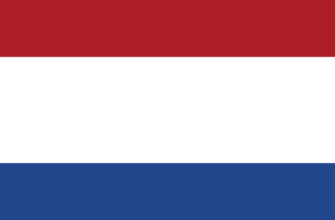Iceland is called the «ice country». The state is located in the west of Northern Europe. The entire territory consists of islands and islets and is washed by the Atlantic Ocean. Iceland, like any state, has its own symbolism. In this article we will talk in detail about the flag.
This is what the modern flag of Iceland looks like:

History of the Icelandic flag
The Icelandic insignia has a rich history.
- The first national symbols appeared in 1897: at that time Iceland was still part of Denmark. The flag was a rectangular dark blue cloth with an image of a white Scandinavian cross. This version did not stick because of the great similarity to the flag of Greece. The attribute was called «Kvitblauin».

Iceland’s first unofficial flag — «Kvitblauin - In 1913, the Prime Minister of the island appointed a special committee whose purpose was to develop and approve a new appearance of the flag. The members of the committee made two proposals for the color design: blue with a white cross and, conversely, white with a blue stripe and a sky cross.
Two years later the blue-white-red flag was adopted, but it could only be used on land. The main difference between that tricolor and the modern one, adopted in 1944, was the richness of color shades.

On November 30, 1918, the King of Denmark passes a law approving the official flag of Iceland. It is hoisted solemnly to the sound of the shots of 21 cannons. The ceremony ended with the singing of the national anthem.
Description
The blue cloth features a Scandinavian red cross with a white outline; its center is offset. A perpendicular cross runs the entire length and width of the flag.
There are 2 versions of the cloth — the national and the state. They differ from each other in length, as well as the presence of 2 plaits formed by a triangular notch.
-

Flag of Iceland -

The government flag of Iceland
The flag of Iceland is similar to the Norwegian flag: the ancestors of the Icelandic people lived in Norway. And the presence of red and white colors makes it similar to the flag of Denmark.
According to the Icelandic government, the use of the flag is a privilege, not a right. Therefore, the owner of such state symbols must adhere to strict rules and keep the «banner» in good condition. Otherwise, the owner could face a heavy fine or even imprisonment.
Colors of the Icelandic flag
The flag of Iceland includes 3 colors: white, blue and red. Blue and white are considered the traditional colors in the country; they are associated with the colors of the Order of the Icelandic Falcon, the national award given for special merit. The bird was also depicted on the Icelandic royal flag. And the red recalls the influence of Denmark.
One of the island’s laws states that the national flag cannot be raised until 7 am and lowered before sunset. The exceptions are solemn and official events, as well as mourning ceremonies: during these times the flag can be flown around the clock.
Meaning of colors and flag symbol
The color scheme was chosen for a reason — it carries a certain meaning and is associated with the Icelandic landscape:
- Red symbolizes the connection to Norway, the historical homeland of Icelanders. It indicates active volcanoes, of which there are many on the island.
- Blue — carries the waters of the Atlantic Ocean, the sky and the mountain peaks that surround Iceland.
- White — reminiscent of the snow and ice.
The basis for the flag of Iceland was the Norwegian tricolor. The cross is a symbol of Christianity; it can be found on the flags of all Scandinavian countries.
In 1944 Iceland became a republic — the current flag was introduced into law as the national flag. The exact proportions and colors of the flag are on the official website of the Prime Minister of Iceland.
General information about Iceland
| Official language | Icelandic |
| Capital | Reykjavik |
| Territory | 103 125 km2 |
| Population | 357,050 people |
| Currency | Icelandic krone,
(ISK, code 352) |
| Phone Code | +354 |










Как студент, изучающий культуру и историю стран, меня всегда fascinирует флаг Исландии! Его дизайн не только эстетически приятен, но и насыщен глубоким смыслом. Синий цвет символизирует океан, белый — снежные вершины, а красный — вулканическую активность. Это потрясающее сочетание отражает уникальную природу Исландии! Кроме того, интересно, как флаг отображает идентичность нации и ее связь с природой. Надеюсь, в будущем смогу увидеть этот флаг в самом Исландии!
Iceland’s flag is super cool! I remember when I visited and saw that blue, white, and red waving in the wind. It totally matched the stunning landscape! I even got a mini flag as a souvenir. Such an epic reminder of my adventure!
As a fellow traveler, I totally get it! When I visited Japan, their flag waving against the cherry blossoms made everything feel so iconic. It’s funny how a small flag can carry big memories from a trip. Those souvenirs really do become little time machines, right?
Iceland’s flag always caught my eye during my trip there. That blue with the red cross inside the white one looked super crisp against the sky. Made me think of cold nights and warm fires—such a chill combo, just like the country itself.